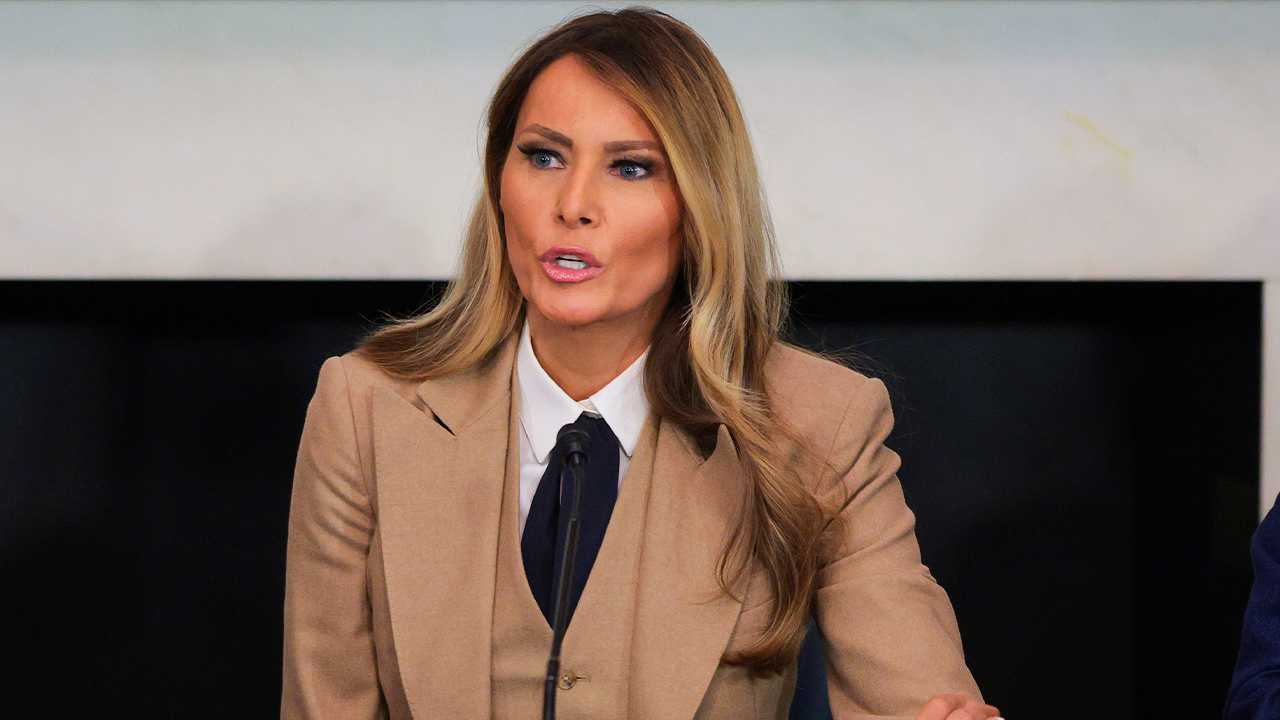For many months now, the city of Milwaukee has been grappling with a lead poisoning crisis that has forced at least four schools to temporarily close and dozens more to undergo rigorous inspections.
Milwaukee, WI
Wisconsin election runs mostly smoothly, despite bomb threats
Votebeat is a nonprofit news organization reporting on voting access and election administration across the U.S. Sign up for Votebeat Wisconsin’s free newsletter here.
Polls closed across Wisconsin after an Election Day marked most notably by a human error in Milwaukee that prompted city election officials to count 31,000 absentee ballots all over again, potentially delaying the state’s unofficial results for hours.
In other areas around the state, problems appeared minimal despite long lines and rain. Some election officials said they had unprecedented turnout but managed it. Madison received bomb threats, likely originating from Russia, directed at several current and former polling places, but city police didn’t deem the threats credible and didn’t interrupt voting because of them.
By 9 p.m., election officials had already tabulated around 1.4 million absentee and in-person ballots across the state.
Unlocked tabulator doors prompt decision to count ballots again
In Milwaukee, election chief Paulina Gutiérrez projected that the city’s counting of absentee ballots would go well into Wednesday morning, partially a result of her decision Tuesday afternoon to make election workers count 31,000 absentee ballots all over again because some staff didn’t lock tabulator doors in the early morning.
For security reasons, those panel doors — which cover the on/off switch and sometimes a slot for USB drives — are to be locked during counting, though other security measures ensured there was no chance of tampering.
The decision to restart the count, city spokesperson Jeff Fleming said, was “out of an abundance of caution.”
Wisconsin Elections Commission Administrator Meagan Wolfe said the commission didn’t weigh in on the city’s decision to rerun the batch of ballots, but she praised the city’s transparency throughout the process.
After Gutiérrez made that decision, the city put out an all-call to every Milwaukee employee to help election officials count the ballots that had already been tabulated. Between 30 and 50 city staff from health, fire, and other departments came to help, city spokesperson Caroline Reinwald said.
“Things are moving really smoothly right now and quickly, so hopefully this isn’t actually that much of a delay,” she said.
But Republican leaders criticized the oversight that led to the second count. U.S. Sen. Ron Johnson of Wisconsin called Milwaukee’s central count “grotesquely disorganized.” State GOP Chair Brian Schimming said about election officials, “You had one job,” adding that the election operation had gone “ridiculously wrong.”
Johnson said his concerns about Milwaukee election officials’ oversight could be alleviated if they present him video logs of the central counting site as well as records from the initial and second count of the 31,000 absentee ballots, including how they’re split by party. There are video streams of central count, but vote totals weren’t exported in the manner that Johnson was seeking, though each vote has a paper trail, city officials stated.
Milwaukee officials had counted 64,000 absentee ballots of around 108,000 total by 8:30 p.m., including the initial batch of ballots that was rerun through tabulators.
Under Milwaukee rules, all of the city’s ballots are processed and tabulated at one central location. State law doesn’t allow election officials to tabulate or process any ballots before Election Day, a policy that is partially responsible for the typically late reporting of results from absentee ballots.
A bipartisan group of lawmakers tried to change that policy this past legislative session, but the Republican-written proposal to allow some ballot processing on the Monday before an election stalled in the Senate.
“It certainly seems like, if we did have laws that were a little bit different, that allowed pre-processing, like the majority of other states, that potentially we could have unofficial results earlier in the evening,” Wolfe said.
Election Day in Milwaukee was also marked by a lawsuit filed by the Republican National Committee, alleging that GOP election observers were being restricted at city election sites. The GOP walked back its claims at a Tuesday hearing, conceding there weren’t any issues.
Hoax bomb threat doesn’t disrupt voting
Outside of Milwaukee, election officials faced few issues.
The Madison Police Department received bomb threats for several current and former polling sites via several emails that appeared to be from an automated bot, perhaps linked to Russia, city spokesperson Dylan Brogan said. Police immediately thought they were bogus, and voting wasn’t disrupted at any voting location, Brogan said, though they followed up to make sure everything was fine.
In Thornapple, a northern Wisconsin town that faced a Justice Department lawsuit over its decision not to use accessible voting machines in the past, election officials did have a voting machine in use, said Erin Webster, a local resident who was an election observer on Tuesday.
Meanwhile, by 9 p.m., Wisconsin voters appeared overwhelmingly in support of a constitutional amendment to ban voting by noncitizens across Wisconsin. The amendment would have little practical effect on who can vote under existing laws, but it would bar municipalities from opening their local elections to noncitizens or younger voters.
The state had a surge of early in-person voting, but election officials said that Tuesday was still very busy. Melissa Kono, who has been a clerk in the small northern Wisconsin town of Burnside since 2013, said it was the most intense election she had ever administered in terms of turnout.
Alexander Shur is a reporter for Votebeat based in Wisconsin. Contact Alexander at ashur@votebeat.org.

Milwaukee, WI
Investigation confirms racist behavior against Rufus King athletes at Waterford Union High School track meet

MILWAUKEE — A letter from Waterford Union High School has confirmed allegations of racist behavior at a recent track meet, nearly two weeks after the Rufus King track team left the event early due to reported racist remarks.
The internal investigation by the Waterford School District involved more than 40 interviews and reviews of video footage, confirming multiple instances of racially charged comments and stereotypical behavior directed at athletes from Rufus King High School.
WATCH: Investigation confirms racist behavior against Rufus King athletes at Waterford Union High School track meet
Investigation shows racial taunts occurred at Waterford track meet
According to the district’s findings, volunteers were intentionally mispronouncing students’ names, middle school students were referring to Rufus King students as “gangsters,” and a WIAA meet official used racially insensitive language directed at a King athlete.
WATERFORD STATEMENT
A joint statement from Waterford and Milwaukee Public Schools indicates that on May 13, Waterford leadership met with King athletes, coaches and administration to formally apologize.

Joint statement from MPS and Waterford
The investigation report states that Waterford will be retraining meet officials and clerks.
TMJ4 asked about disciplinary actions for the students involved and Superintendent Luke Francois sent the following statement:
“Waterford Union High School is committed to holding students accountable through our established disciplinary processes, in alignment with district policy and state law. While we cannot comment on specific disciplinary actions due to student privacy protections, I can confirm that appropriate consequences are being applied based on the findings of our investigation. Our focus remains on accountability, education, and ongoing efforts to ensure a safe and respectful environment for all students.”
This story was reported by a journalist and has been converted to this platform with the assistance of AI. Our editorial team verifies all reporting on all platforms for fairness and accuracy.
Let’s talk:
Hey there! At TMJ4 News, we’re all about listening to our audience and tackling the stuff that really matters to you. Got a story idea, tip, or just want to chat about this piece? Hit us up using the form below. For more ways to get in touch, head over to tmj4.com/tips.
It’s about time to watch on your time. Stream local news and weather 24/7 by searching for “TMJ4” on your device.
Available for download on Roku, Apple TV, Amazon Fire TV, and more.
Report a typo or error // Submit a news tip
Milwaukee, WI
American kids are being poisoned by lead. Trump is letting it happen.

It began on January 13, when Milwaukee first notified parents at one grade three to five school that a child had tested positive for high levels of lead in their blood. Local health officials determined the lead exposure did not occur at the child’s home, which left their school as the obvious culprit.
City investigators found chipped lead paint and lead-laden dust throughout the school building; press and government reports indicate that the school district has struggled to keep up with paint maintenance requests, due to a lack of funding and manpower. Local officials soon realized they had a big problem on their hands, as the vast majority of the city’s school buildings (roughly 125 out of 150) were built before 1978, when lead paint was banned.
Lead, a dangerous neurotoxin that can lead to development problems in children after prolonged exposure, has now been detected in at least nine public schools, and at least four students have tested positive for high lead levels in their blood. So far, no children have been hospitalized for acute lead poisoning, which can be life-threatening, but the affected kids continue to be monitored. Several buildings have been temporarily closed so workers can do a deep clean. Milwaukee has been inspecting all of its public schools for lead, with the goal of completing the review by September.
Normally, cities navigating such a crisis could depend on the Centers for Disease Control and Prevention for federal support. When the lead poisoning was first detected in January, at the tail end of the Biden administration, city health officials were immediately in contact with the CDC environmental health team, which included several of the country’s top lead poisoning experts, Milwaukee health commissioner Mike Totoraitis told me. A group of federal experts were planning a trip to the city at the end of April.
But not anymore. In early April, the Trump administration denied Milwaukee’s request for support because there was no longer anybody on the government’s payroll who could provide the lead poisoning expertise the city needs.
On April 1, the lead exposure team within the CDC’s National Center for Environmental Health was laid off as part of Health Secretary Robert F. Kennedy Jr.’s massive restructuring of the federal health department. The planned trip was canceled, and no federal officials have stepped foot in Milwaukee since to aid in the response.
“We were talking to [the federal experts] multiple times each week,” Totoraitis said, “before they were let go.”
Milwaukee has pushed ahead with its own inspection and free blood testing clinics. The city reported on May 13 that it had replaced 10,000 lead water service lines, in an attempt to remove another possible source of exposure for local children. But they still have 55,000 more left to go, and local officials have said they would need state or federal funding to finish the job. (It is estimated to cost the city about $630 million.)
Ordinarily, Totoraitis said, the CDC experts would serve as the city’s subject matter experts, guiding them through their epidemiological investigations. Federal officials are especially adept at the detective work that can determine whether a child was exposed at home or at the school. Milwaukee officials had recent experience with lead exposures in homes but not in schools; they were relying on federal expertise to interpret lead dust levels that were found during the school inspections. Without them, they’ve been left to navigate a novel and dangerous health threat on their own.
“They were there for that sole purpose of having some of the best subject matter expertise on lead poisoning, and it’s gone now,” Totoraitis said. “Now we don’t have any experts at the CDC to reach out to.”
In this uncertain new era for public health, Milwaukee’s experience may become all too common: a city left to fend for itself amid an emergency. What in the past might have been a national scandal could become all too routine.
This is what happens when the federal government won’t respond to a health crisis
When I spoke with Totoraitis, he was already contemplating the next public health problem he would have to deal with. “If we have a new emerging health issue, that I don’t have internal expertise on and neither does the state, we don’t have anyone to call now,” Totoraitis said. “That’s a scary endeavor.”
He can’t be sure what kind of help he will be able to get from the federal government as the restructuring at the US Department of Health and Human Services continues. The department just rehired hundreds of health workers focused on workplace safety, but other teams, including the lead team, have not been brought back.
The turmoil makes it harder for local officials to keep track of which federal experts are still on staff, where they are located, and who has actually been let go. But the message is clear: President Donald Trump and his senior deputies want state and local governments to take on more of these responsibilities — without a helping hand from the feds.
The US public health system has been set up so that the state and local health departments are the front line, monitoring emerging problems and providing personnel in a crisis. The federal government supplies insights that state and local officials probably don’t have on their own. That is what Totoraitis was depending on; Milwaukee was inexperienced with lead exposures in large public buildings before this year’s emergency. (One of the laid-off CDC scientists has since sought to volunteer to help Milwaukee, as Stat recently reported; the person told me they were hoping to help with community engagement, which federal officials would usually assist with.)
Health crises happen all the time. Right now, there is a small tuberculosis outbreak in Kansas; a Florida town experienced the unexpected spread of hepatitis last December. A dozen people have been hospitalized in a listeria outbreak. And the US is currently facing its largest outbreak of measles in decades, with more than 1,000 people sickened. At one point, local officials said that the federal government had cut off funding for the outbreak response as part of a massive clawback of federal funds at the end of March, although the CDC has since sent additional workers to West Texas where the outbreak originated.
There used to be little doubt the federal government would step up in these scenarios. But Totoraitis warns that Milwaukee’s experience of the past few months, left to fend for itself in an emergency, could soon be repeated elsewhere.
“Let’s say next year this time, St. Louis is in a similar situation — they could call us, but we don’t have the bandwidth to consistently support them,” Totoraitis said. “This unfortunately is a great example of how quickly changes in the federal government can affect local government.”
Kids are being poisoned by lead. Trump is letting it happen.
Kennedy, Trump, and Elon Musk’s Department of Government Efficiency gleefully cut 10,000 jobs from US health agencies this spring. The cost of those losses will be felt every time a city is confronted with an unexpected health threat. Today, in Milwaukee, families are facing the fear and uncertainty of lead exposure — and they know federal help isn’t coming. As one Milwaukee mom told ABC News recently: “It really sends the message of, ‘You don’t matter.’”
Milwaukee, WI
Erin Shirreff photography at Milwaukee Art Museum

The Milwaukee Art Museum presents the most comprehensive exhibition in a decade of works by Erin Shirreff, a highly regarded contemporary artist at the forefront of sculpture, photography, and video. Erin Shirreff: Permanent Drafts showcases over 40 recent works, including installations specific to the Milwaukee Art Museum, and will be on view May 30 through August 31, 2025, in the Museum’s Herzfeld Center for Photography and Media Arts.
Erin Shirreff (b. 1975) creates boundary-crossing art exploring the gap between images and the things they picture. Trained as a sculptor, Shirreff understands photography as a significant, but imperfect means of conveying three-dimensional objects. Her work focuses on the reproductions through which we often access art, inviting audiences to consider how each of us sees and interprets the world around us. Shifting across time, material, and dimension, her art rewards in-person engagement and slow, close looking.
“While photographs increasingly lose trust as conveyors of knowledge, Erin Shirreff’s work, which dwells in the place between image and object, has only become more relevant,” the exhibition’s curator Kristen Gaylord, Herzfeld Curator of Photography and Media Arts, said. “I have long admired her thoughtful approach to the generative potential of representation, and it has been a joy to collaborate with her in bringing this wide-ranging presentation of her recent work to Milwaukee.”
The exhibition will be installed in the Herzfeld Center for Photography and Media Arts, the Museum’s dynamic space dedicated to photography, film, video, and light installations. Since 2015, when it was established, the Herzfeld Center has been home to cutting-edge exhibitions that feature artists who shape, push the boundaries of, and expand photography and media arts.
“Erin Shirreff: Permanent Drafts continues the Museum’s exploration into the expansive world of photography, beyond the traditional print to the medium’s larger role in art and society,” Elizabeth Siegel, Chief of Curatorial Affairs, said.
Hear from the artist herself on Thursday, August 7, when Erin Shirreff will present an artist talk in Lubar Auditorium, and engage with Milwaukee experts on Thursday, August 28, at the Haberman Local Luminaries program taking place in the Herzfeld Center.
About Erin Shirreff
Erin Shirreff’s work has been featured in recent solo exhibitions at SITE Santa Fe (2024); Clark Art Institute, Williamstown, MA (2021–22); San Francisco Museum of Modern Art (2019); and Kunsthalle Basel, Switzerland (2016). A survey exhibition of her photography, sculpture, and video was co-organized by the Institute of Contemporary Art, Boston, and the Buffalo AKG Museum, New York, in 2015–16. Her work is included in the permanent collections of the Centre Pompidou, Paris; Los Angeles County Museum of Art; Metropolitan Museum of Art, New York; Museum of Modern Art, New York; Solomon R. Guggenheim Museum, New York; and Yale University Art Gallery, New Haven; among others.
Shirreff was born in 1975 and lives and works in Montreal.
-

 Austin, TX1 week ago
Austin, TX1 week agoBest Austin Salads – 15 Food Places For Good Greens!
-

 Technology1 week ago
Technology1 week agoMexico is suing Google over how it’s labeling the Gulf of Mexico
-

 Politics1 week ago
Politics1 week agoDHS says Massachusetts city council member 'incited chaos' as ICE arrested 'violent criminal alien'
-

 Politics1 week ago
Politics1 week agoPresident Trump takes on 'Big Pharma' by signing executive order to lower drug prices
-

 Education1 week ago
Education1 week agoA Professor’s Final Gift to Her Students: Her Life Savings
-

 News6 days ago
News6 days agoAs Harvard Battles Trump, Its President Will Take a 25% Pay Cut
-

 Education1 week ago
Education1 week agoVideo: Tufts Student Speaks Publicly After Release From Immigration Detention
-

 News1 week ago
News1 week agoWhy Trump Suddenly Declared Victory Over the Houthi Militia


















